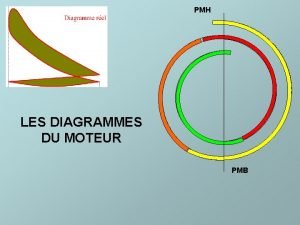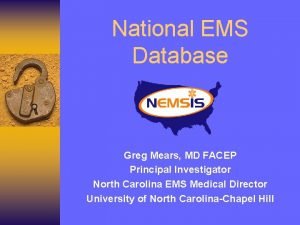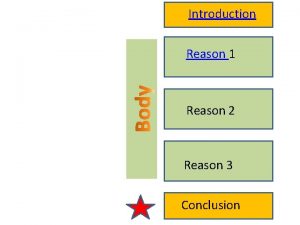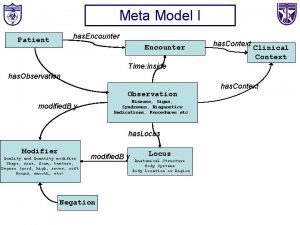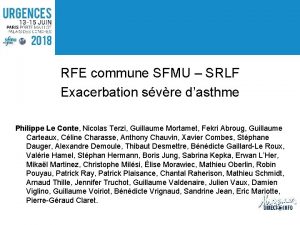EMS Reason for Encounter RFE Greg Mears MD






















- Slides: 22

EMS Reason for Encounter (RFE) Greg Mears, MD FACEP Principal Investigator North Carolina EMS Medical Director University of North Carolina-Chapel Hill

RFE? ÞWhat is it? ÞWhen did this idea happen? ÞWhere did the idea come from? ÞWhy do we need it? ÞHow do we get it?

What is it? Þ Coding system for EMS Þ Uniform description of the reason for an EMS encounter Þ Not diagnostic (not mapped to ICD-9) Þ Based on EMS curriculum skill set Þ Based on NHTSA dataset Þ Reproducible Þ A calculation, not a code

Reason for Encounter ÞTwo year project ÞFunded by NHTSA

Where did the idea come from? ÞProblems ÞQuality Management ÞPatient Care ÞEMS System ÞEMS Technician ÞEMS Outcomes ÞEMS Research ÞSurveillance ÞReimbursement

Example of Problem ÞRespiratory Distress could be: ÞAsthma ÞCOPD ÞPneumonia ÞTrauma-Chest wall contusion or pneumothx ÞForeign Body ÞCongestive Heart Failure

Why do we need it? Þ Same issues ÞQuality Management ÞOutcomes ÞResearch ÞSurveillance ÞReimbursement Þ Also ÞSystem Design ÞInformation Systems ÞMerging several systems data together ÞNational EMS Database ÞDescriptive Information ÞLinkage or pass through to other healthcare information systems ÞEMS Policy and Funding

Final RFE ÞDefinition ÞPurpose ÞMethod ÞDatapoints ÞEvaluation

RFE Definition ÞAn EMS reason for encounter is an objective description of the patient’s problem which forms the basis of EMS care, based on the compilation and/or calculation of existing EMS patient care report documentation.

Purpose ÞThe RFE serves to subdivide EMS patients into defined groups which are reproducible, independent, and usable for EMS quality management.

Method Þ Dual Evaluation by pilot data to develop a final RFE ÞCluster analysis based on all datapoints within either the NHTSA or Pre. MIS datasets. • Did not reveal a valid method for RFE ÞTreed description based on • • • Injury Complaint Location System Acuity Accepted method by the Task Force

Parameters ÞMust include all technician levels? ÞMust be derived from the NHTSA dataset? • The datapoints will become a component of the NHTSA dataset version 2. 0 ÞMust conform to the EMS curriculum? • The EMS curriculum addresses each of the datapoints at all personnel levels. • The organ system data point was felt to only be valid for EMT-Paramedic level personnel ÞMust not require coding? • Coding is not required, only completion of the datapoints as part of normal documentation

Analysis Þ Evaluate the models by validating the RFE with: Þ Provider coding of RFE Þ Hospital diagnosis • Mapping RFE to Hospital Diagnosis failed. • Decision: RFE must stand alone but be reproducible in the EMS community Þ Analysis for accuracy and reproducibility Þ Review of 500 NC Pre. MIS records which document RFE components Þ Multiple RFE’s per patient • To complicated for the initial project. • A single RFE per patient was determined to be the goal.

RFE Data Points ÞInjury Present ÞPrimary Complaint Anatomic Location ÞPrimary Symptom ÞPrimary Complaint Organ System

Injury Present ÞYes ÞNo ÞUnknown • Indication whether or not there was an injury.

Primary Complaint Anatomic Location ÞAbdomen ÞBack ÞChest ÞExtremity-Lower ÞExtremity-Upper ÞGeneral/Global ÞGenitalia ÞHead ÞNeck • The anatomic location of the chief (primary) complaint as identified by EMS personnel

Primary Symptom Þ Þ Þ Þ Bleeding Breathing Problem Change in Responsiveness Choking Death Device/Equipment Problem Diarrhea Drainage/Discharge Fever Malaise Mass/Lesion Mental/Psych Nausea/Vomiting Þ Þ Þ Þ None Pain Palpitations Rash/Itching Swelling Transport Only Weakness Wound • The primary symptom present in the patient or observed by EMS personnel

Primary Complaint Organ System Þ Cardiovascular Þ Central Nervous System Þ Endocrine/Metabolic Þ Gastro-intestinal Þ Global/General Þ Musculoskeletal Þ Obstetrics/Gynecology Þ Psychological Þ Pulmonary Þ Renal Þ Skin • The organ system of the patient chief (primary) complaint which is injured or affected, based on the evaluation of an EMTParamedic.

Verification ÞLarge scale reliability of all EMS RFEs. ÞAll technician levels ÞRural vs. Urban ÞVolunteer vs. Paid ÞOther states, geography • No able to be completed within time frame and funding level

Evaluation Þ 500 Records were evaluated by the PI for the following: ÞCompletion of the Datapoints based on the review of the Ambulance Care Report ÞDocumentation of the EMT personnel level completing the form ÞIdentification of a Volunteer or Paid EMS Service ÞPopulation of the Service Area

Evaluation Results Injury Present Anatomic Location Primary Symptom EMT-B 95/96 (99%) 92/96 (96%) 88/96 (92%) EMT-D 100/104 (96%) 98/104 (94%) 95/104 (91%) EMT-I 99/100 (99%) 96/100 (96%) 92/100 (92%) EMT-P 198/200 (99%) 195/200 (98%) 190/200 (95%)

EMS Reason for Encounter (RFE)
 Greg mears md
Greg mears md Pmh pmb
Pmh pmb Leslie mears announcer
Leslie mears announcer Trög för kemist
Trög för kemist Vad är ett minoritetsspråk
Vad är ett minoritetsspråk Datorkunskap för nybörjare
Datorkunskap för nybörjare Autokratiskt ledarskap
Autokratiskt ledarskap Ellika andolf
Ellika andolf Returpilarna
Returpilarna Rita perspektiv
Rita perspektiv Toppslätskivling dos
Toppslätskivling dos Redogör för vad psykologi är
Redogör för vad psykologi är Bästa kameran för astrofoto
Bästa kameran för astrofoto Bra mat för unga idrottare
Bra mat för unga idrottare Gumman cirkel
Gumman cirkel Publik sektor
Publik sektor Dikt exempel
Dikt exempel Etik och ledarskap etisk kod för chefer
Etik och ledarskap etisk kod för chefer Fredsgudinnan
Fredsgudinnan Vilotidsbok
Vilotidsbok Orubbliga rättigheter
Orubbliga rättigheter Kontinuitetshantering
Kontinuitetshantering Ministerstyre för och nackdelar
Ministerstyre för och nackdelar

